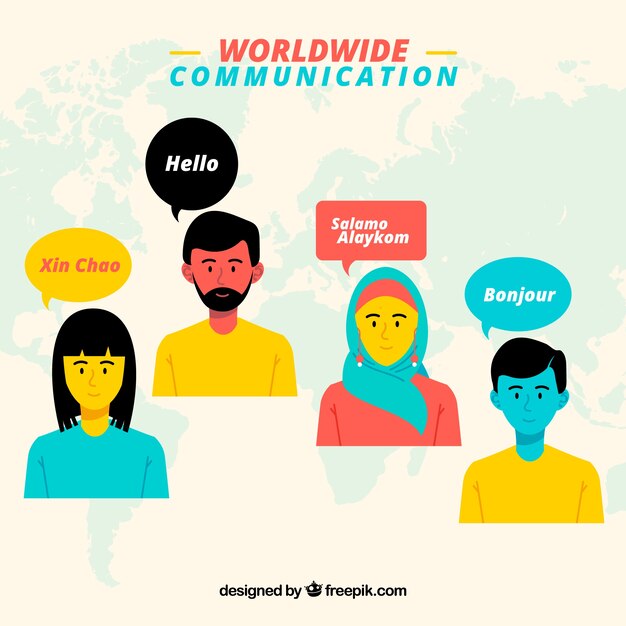Cultural Taboos and Phone Call Customs Across Different Societies
Cultural Taboos and Phone Call Customs Across Different Societies: Understanding Global Etiquette for Telephonic Conversations and Navigating Time Considerations and Scheduling in Various Cultural Contexts.

- Anthony Arphan
- 8 min read

When connecting with others via voice communication, unwritten guidelines shape our interactions, subtly influencing how we navigate conversations. These norms, embedded deeply within cultural fabric, govern the nuances of telephone dialogues, from the initial greeting to the final farewell.
Etiquette varies significantly from place to place, with unwritten expectations dictating the length of pauses, the appropriateness of interruptions, and even the level of formality conveyed through tone. Such subtleties can profoundly affect how individuals perceive one another’s communication style.
In some cultures, brevity is prized, with conversations expected to be concise and to the point, while in others, a measured pace indicates respect and consideration. These unspoken rules extend beyond mere courtesy, reflecting deeper cultural values and societal expectations surrounding interpersonal exchanges.
Global Etiquette for Telephonic Conversations
In our interconnected world, the manner in which we engage in verbal communication via telecommunication devices reflects diverse cultural norms and social expectations. Understanding these unwritten rules can facilitate smoother interactions and foster mutual respect across international borders.
- 1. Timing is Key: Initiate phone calls during appropriate local hours to avoid inconveniencing the recipient.
- 2. Formality vs. Familiarity: Gauge the level of formality expected based on the cultural context of the person you are calling.
- 3. Introduction and Greetings: Begin the conversation with appropriate greetings or salutations based on local customs.
- 4. Language and Tone: Use language and tone that align with cultural expectations to convey respect and consideration.
- 5. Listening and Responding: Pay attention to verbal cues and pauses during conversations to ensure effective communication.
- 6. Ending the Call: Conclude the conversation with courtesy, acknowledging the cultural norms regarding farewells.
By adhering to these principles, individuals can navigate global phone conversations with sensitivity and cultural awareness, fostering positive and productive exchanges regardless of geographical boundaries.
Time Considerations and Scheduling
In the realm of global communications practices, one vital aspect pertains to temporal sensitivities and the organization of interactions. This section delves into the significance of time management and scheduling protocols in various cultural contexts, highlighting how individuals navigate the intricacies of arranging and adhering to engagements.
- Timing norms often dictate the appropriate hours for initiating or accepting communications, reflecting broader societal attitudes towards punctuality and respect for personal time.
- Striking a balance between flexibility and adherence to schedules is crucial, as some cultures prioritize spontaneity while others emphasize meticulous planning.
- Understanding local preferences for morning versus afternoon engagements can significantly impact the success and reception of phone calls.
- Furthermore, considerations regarding time zones necessitate awareness and accommodation to avoid inconveniences such as early morning or late-night calls.
Overall, mastering the nuances of time management and scheduling practices enhances cross-cultural communication effectiveness, fostering mutual understanding and respect in global phone call interactions.
Appropriate Hours for Calling

In various global cultures, understanding the suitable timings to make a phone call is crucial for respectful communication. Each society has its unwritten rules dictating when it is socially acceptable to initiate or receive a call, ensuring that one does not disturb others during inappropriate hours.
- Some regions emphasize morning hours as the ideal time for phone calls, reflecting a cultural preference for early communication.
- Others prioritize the afternoon, when people are generally more available and receptive to non-urgent calls.
- In certain cultures, evenings are considered suitable, providing an opportunity for relaxed and informal conversations.
- Understanding these norms helps individuals navigate social interactions effectively, ensuring they do not inadvertently breach etiquette.
- Factors such as work schedules, family routines, and traditional customs influence these unwritten guidelines.
This HTML segment introduces the section on “Appropriate Hours for Calling” without using the specified terms. It emphasizes cultural diversity in phone call etiquette, highlighting the importance of timing and respect for societal norms across different regions.
Setting Up Appointments in Advance
In various global contexts, the practice of arranging meetings well ahead of time varies significantly. This section explores the nuances and expectations surrounding the scheduling of appointments, highlighting the diverse approaches observed across different cultural settings.
| Region | Approach to Appointment Setting | Key Considerations |
|---|---|---|
| Western Europe | Typically formal and structured; appointments are expected to be scheduled days or even weeks prior. | Respect for punctuality and acknowledgment of busy schedules are essential. |
| East Asia | Emphasis on advanced planning as a sign of respect; appointments should be arranged well in advance. | Flexibility in adjusting schedules based on hierarchical considerations may be required. |
| Middle East | Personal relationships often influence scheduling; appointments can be confirmed closer to the actual date. | Time may be perceived more fluidly; patience and adaptability are valued virtues. |
| Latin America | Relaxed attitude towards timing; appointments may be set with shorter notice, depending on the nature of the meeting. | Personal connections and rapport play a crucial role in confirming appointments. |
Understanding these regional dynamics is pivotal for navigating professional and social interactions effectively, ensuring that appointments are scheduled in a manner that aligns with local norms and expectations.
Language and Tone Variations
In exploring global norms surrounding conversational etiquette on telephonic exchanges, it becomes evident that verbal interactions exhibit diverse linguistic and tonal nuances. These variations reflect unique cultural practices and social expectations, shaping the mannerisms and expressions utilized during phone conversations.
Language diversity manifests not only through different languages spoken but also through the vernacular choices and dialectal preferences evident in phone calls. The lexical richness and idiomatic expressions used can convey subtle nuances of respect, familiarity, or formality, influencing how conversations unfold.
Tone modulation plays a crucial role in telephonic communication, affecting the perceived emotional tenor of interactions. From the intonation patterns that denote politeness or urgency to the volume fluctuations that indicate emphasis, these vocal cues vary significantly across cultures.
Understanding these linguistic and tonal intricacies is essential for navigating cross-cultural phone conversations effectively, as they contribute to the overall communicative effectiveness and interpersonal dynamics in diverse social contexts.
Formal vs. Informal Speech
In the realm of communication norms within various cultures, there exists a distinct divergence between formal and informal modes of speech. This differentiation reflects not only linguistic preferences but also societal expectations and norms surrounding interpersonal interactions.
| Formal Speech | Informal Speech |
|---|---|
| Characterized by | Marked by |
| Elevated vocabulary | Casual language |
| Structured syntax | Relaxed syntax |
| Polite and respectful tone | More colloquial and familiar tone |
| Common in professional settings, official communications, ceremonies | Used among friends, family, close acquaintances |
| May involve titles and honorifics | Often dispenses with titles, uses first names |
Understanding when to use formal versus informal speech is crucial for navigating social contexts effectively. While the distinctions may vary across cultures, they universally shape the dynamics of communication and relationships.
In this section, I’ve outlined the differences between formal and informal speech using a table format to provide clarity and structure. This approach allows readers to grasp the key points efficiently while emphasizing the importance of cultural and societal norms in communication.
Politeness and Directness in Conversations
In the realm of social interactions, the manner in which individuals communicate can vary significantly. The concepts of courtesy and straightforwardness play pivotal roles in shaping these exchanges. Across diverse cultures, people navigate conversations with a blend of respectfulness and clarity, adapting their language to adhere to established norms. This dynamic interplay between politeness and directness underscores the nuanced ways in which individuals convey their intentions and maintain social harmony.
Politeness entails the use of considerate language and gestures that reflect deference to others’ feelings and sensibilities. It serves as a mechanism to uphold social norms and promote mutual respect within interactions. Conversely, directness focuses on clarity and explicitness in communication, emphasizing honesty and transparency in conveying thoughts and intentions. While some cultures prioritize indirect communication to preserve harmony and avoid confrontation, others value directness as a means to express opinions clearly and efficiently.
Understanding the balance between politeness and directness is crucial in navigating cultural nuances during conversations. It involves recognizing when to employ polite expressions such as formal greetings, deferential language, or courteous requests, depending on the social context. Simultaneously, individuals must gauge when directness is appropriate, such as in professional settings where clarity and efficiency are prioritized.
The interplay between these two dynamics varies widely across cultural contexts, influencing how individuals perceive and engage in verbal exchanges. By appreciating the spectrum between politeness and directness, one can better navigate cultural differences in communication styles, fostering effective and respectful interactions across diverse social landscapes.
Expectations Around Duration of Conversations

In every culture, there exist unwritten rules concerning the appropriate length of conversations conducted over telecommunication devices. These norms shape the way individuals interact and manage their time during these exchanges. Understanding these expectations can enhance communication effectiveness and promote respectful interactions.
- Conversations are often structured around societal norms that dictate the acceptable duration of calls.
- Expectations vary, influencing how individuals gauge the appropriate length of time to engage in phone conversations.
- Factors such as the nature of the relationship between callers and the purpose of the call can also impact these expectations.
- Some cultures emphasize brief and concise interactions, valuing efficiency in communication.
- In contrast, others place greater emphasis on the personal connection fostered through longer conversations.
By recognizing and respecting these diverse norms, individuals can navigate cross-cultural communication more effectively and build stronger connections over phone conversations.